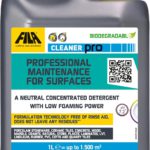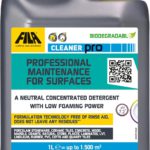Explore the Essential Benefits of Backflow Testing Services for Water Quality Protection
Key Steps for Implementing Effective Backflow Prevention Strategies

Backflow Testing Services in Richmond are imperative for safeguarding water supplies against contamination threats that can originate from multiple sources. This essential process entails the meticulous installation of specialised devices explicitly designed to thwart the reverse flow of water within plumbing systems. By employing these preventative measures, we can ensure that potable water remains free from harmful contaminants and safe for human consumption. It is crucial for both homeowners and businesses to understand the various scenarios that can lead to backflow incidents. For instance, a sudden drop in <a href="https://limitsofstrategy.com/water-pressure-issues-at-home-expert-solutions-from-plumbmaster/">water pressure</a> can create conditions where non-potable water unintentionally re-enters the clean water supply. To address these potential risks, a variety of devices are employed, which includes:
- Reduced Pressure Zone (RPZ) Assemblies
- Double Check Valve Assemblies
- Pressure Vacuum Breakers
- Atmospheric Vacuum Breakers
- Inline Check Valves
- Ball Valve Assemblies
- Test Cocks
- Backflow Prevention Devices for Fire Protection Systems
These vital devices are utilised across numerous applications, from residential properties to expansive commercial facilities, ensuring that water systems function safely and effectively.
Understanding the Regulatory Framework for Backflow Testing Compliance
In Canada, a comprehensive framework of regulations mandates the regular testing of backflow prevention devices to ensure water safety. Adhering to these regulations is essential for both residential and commercial property owners and is governed by a combination of municipal and provincial legislation. Typically, municipalities obligate property owners to install and routinely test their backflow prevention devices. Significant Canadian regulations include:
- Canadian Standards Association (CSA) standards for backflow prevention
- Provincial regulations focused on safeguarding water safety
- Municipal bylaws that stipulate the frequency of testing
- Health and Safety codes outlining water quality standards
- Environmental Protection Agency guidelines for water systems
Compliance with these regulations is vital not only for the protection of public health but also to prevent property owners from incurring fines and other legal consequences.
The Importance of Regular Backflow Testing for Health and Safety
Regular backflow testing is crucial for maintaining high water quality, mitigating health risks, and ensuring compliance with local regulations. The benefits of routine backflow testing extend beyond compliance; they are fundamental to protecting public health, enhancing safety, and promoting environmental sustainability. Some of the key advantages of consistent backflow testing include:
- Protecting the quality of drinking water
- Reducing health risks associated with contaminated water
- Ensuring adherence to legal and regulatory requirements
- Facilitating early detection and rectification of plumbing issues
- Increasing property value through compliance and safety assurances
By emphasising the importance of backflow testing, property owners can guarantee that their water systems remain safe and healthy, benefitting all residents and the wider community.
The Dangers of Neglecting Backflow Testing Protocols

Failing to conduct backflow testing can lead to severe risks, including potential water contamination, health hazards, and legal complications. When backflow prevention devices are not routinely tested, they may malfunction, allowing harmful contaminants to permeate the potable water supply. The consequences can be dire, affecting both public health and the financial standing of property owners. Potential repercussions include:
- Increased risk of waterborne illnesses
- Possible pollution of local water resources
- Significant fines from regulatory authorities
- Legal actions stemming from health-related claims
- Damage to property reputation and market value
Maintaining a consistent testing schedule is paramount to avert these serious consequences and to preserve the integrity of water systems.
Expert Insights into Backflow Testing Services Available in Richmond
Identifying Key Qualities of a Trustworthy Backflow Testing Service
The credibility of backflow testing services hinges on a variety of factors, including certification, experience, and adherence to industry standards. In Richmond, reputable services are characterised by technicians who possess certifications from recognised organisations, demonstrating their expertise in effective backflow prevention and testing methods. Many established services in Richmond showcase a commitment to quality through favourable customer feedback and strict adherence to regulatory standards. Typically, these companies:
- Employ certified backflow testers with extensive training
- Utilise cutting-edge testing equipment
- Maintain an exemplary compliance record with local regulations
- Provide transparent pricing and comprehensive service reports
Potential clients should actively seek out reviews and examples of successful previous projects to evaluate reliability.
Determining the Frequency of Backflow Testing for Various Properties

The frequency of backflow testing is influenced by property type and specific local regulations. In Richmond, backflow testing is generally performed annually or bi-annually, based on the risk level associated with the property's water system. For instance, commercial establishments—particularly those with extensive water usage or complex plumbing systems—may require more frequent testing. Property owners should consider the following steps to effectively organise backflow testing:
- Review local regulations to determine the required testing frequency
- Assess the type of backflow prevention device installed
- Consult a certified technician to evaluate risks
- Schedule testing during off-peak water usage periods to minimise disruptions
Regularly scheduling these tests is essential for ensuring compliance and safeguarding the water supply.
Understanding the Procedures Conducted During a Backflow Test
A backflow test involves a systematic evaluation of backflow prevention devices to confirm their proper functioning. Property owners should anticipate that the technician will arrive equipped with specialised tools and adhere to an established testing protocol. Generally, the backflow testing process encompasses:
- Visual inspection of the backflow prevention assembly
- Pressure testing to identify leaks or malfunctions
- Verification of the operational integrity of valves
- Documentation of findings and recommendations for repairs if necessary
This thorough approach not only uncovers potential issues but also ensures compliance with local regulations. Following the testing, the technician should deliver a detailed report summarising the findings and any suggested actions.
Selecting the Optimal Backflow Testing Service in Richmond
Essential Certifications for Backflow Testing Technicians
Technicians must hold certifications from recognised organisations, possess substantial experience, and have a profound understanding of backflow prevention and testing protocols. These qualifications are critical to ensure that testing is performed accurately and in compliance with local regulations. Key certifications for backflow testing technicians include:
- Certified Backflow Prevention Tester (CBPT)
- Cross-Connection Control Specialist Certification
- Provincial plumbing licenses
- OSHA safety certifications
Verifying these qualifications during the selection process can significantly enhance the likelihood of receiving top-tier service.
The Importance of Local Knowledge in Effective Backflow Testing
Local expertise is vital when selecting a backflow testing service, ensuring familiarity with regional regulations and the specific challenges related to the local water system. Richmond’s unique water supply and plumbing infrastructure present distinct challenges that local professionals are better equipped to navigate. The benefits of opting for a local service provider in Richmond include:
- Understanding of local codes and regulations
- Awareness of common issues faced by Richmond residents
- Faster response times for service requests
- Established community relationships that foster trust
By choosing a local expert, property owners can ensure that their backflow prevention needs are addressed efficiently and effectively.
Evaluating the Credibility of a Backflow Testing Service
Assessing the credibility of a backflow testing service can be achieved through several methods. Prospective clients can build their confidence in a service provider by conducting thorough research. Recommended steps include:
- Reading online customer reviews and testimonials
- Verifying valid certifications and licenses
- Engaging in direct communication to evaluate responsiveness
- Requesting references from previous clients
Following these steps will aid in ensuring that you select a reputable backflow testing service capable of delivering reliable and compliant testing.
Common Challenges Encountered During Backflow Testing
Understanding the Different Types of Backflow Contamination
Backflow contamination is generally categorised into two primary types: backpressure and backsiphonage. Understanding the differences between these two categories is essential for effective management and prevention strategies. Backpressure arises when the pressure in a non-potable system exceeds that of the potable system, potentially allowing contaminants to flow backward. In contrast, backsiphonage occurs when a drop in pressure within the supply line creates a vacuum effect, drawing contaminants into the potable water system. Addressing these issues involves:
- Specific prevention devices tailored for each type of backflow
- Regular testing to identify vulnerabilities
- Public education on backflow prevention techniques
- Implementation of stringent plumbing design standards
By understanding these categories, property owners can adopt proactive strategies to effectively mitigate risks.
Early Detection Methods for Backflow Issues
Identifying backflow problems can be accomplished through various strategies, including visual inspections, pressure measurements, and the use of specialised equipment. Professionals typically begin with a visual inspection to detect obvious signs of wear or damage. Pressure testing involves measuring the pressure differential across backflow prevention devices. Moreover, advanced tools—such as pressure gauges and flow meters—provide comprehensive insights into system functionality. Common instruments used for detecting backflow issues include:
- Manometers for accurate pressure measurement
- Flow meters to assess water flow
- Smoke testing to identify leaks
- Digital testers for precise assessments
These techniques enable technicians to confirm that systems are operating correctly and to identify any necessary repairs.
The Consequences of Ignoring Backflow Problems
Overlooking backflow issues can have severe consequences, including contamination of the water supply, which poses significant health risks and may lead to regulatory fines and penalties. Disregarding backflow problems not only jeopardises public health but also creates considerable liabilities for property owners. Potential consequences include:
- Increased likelihood of waterborne diseases
- Legal actions stemming from health-related claims
- Regulatory fines and penalties for non-compliance
- Long-lasting damage to community trust and property reputation
Neglecting backflow issues is not only irresponsible; it can lead to costly repercussions.
Proven Advantages of Backflow Testing Services in Richmond
Enhancing Public Health Standards Through Backflow Testing
Backflow testing is vital for maintaining the safety of the public water supply by preventing contamination, which is crucial for the health of the community. Regular testing helps detect and address potential problems before they escalate into significant health threats. Statistics indicate that communities with strict backflow testing protocols experience notably lower rates of waterborne illnesses. The impact of backflow testing on public health is profound, encompassing:
- Reduced incidence of gastrointestinal illnesses
- Lower healthcare costs related to waterborne diseases
- Increased community trust in public water systems
- Heightened awareness surrounding water safety issues
Thus, prioritising backflow testing is not merely a regulatory obligation; it is a fundamental aspect of ensuring public health.
Economic Benefits of Effective Backflow Prevention
Implementing effective backflow prevention can yield substantial financial advantages by reducing costs associated with water treatment and avoiding potential fines for non-compliance. Property owners who prioritise regular backflow testing can avert costly repairs and legal fees arising from contamination incidents. The economic advantages of robust backflow prevention include:
- Lower expenses related to emergency repairs and litigation
- Reduced water treatment costs due to proactive measures against contamination
- Enhanced property values through compliance and safety assurances
- Potential decreases in insurance premiums due to mitigated risks
Investing in backflow prevention not only conserves money but also enhances the overall value of properties.
The Role of Backflow Testing in Environmental Sustainability
Backflow testing is crucial for environmental protection by preventing the introduction of contaminants into water systems. Environmental sustainability is a primary concern, as polluted water can adversely affect ecosystems and public health. Regular backflow testing contributes to environmental sustainability by:
- Preserving local water supplies for future generations
- Avoiding pollution of natural bodies of water
- Supporting biodiversity through the maintenance of clean waterways
- Encouraging responsible water management and usage practices
By adhering to diligent backflow testing practices, communities can strive towards environmental protection while ensuring safe access to drinking water for everyone.
Best Practices for Backflow Testing in Richmond
Effective Scheduling and Documentation of Backflow Testing
Efficient scheduling and thorough documentation are vital for maintaining compliance and guaranteeing successful backflow prevention. Keeping detailed records of testing dates, results, and maintenance actions can facilitate adherence to local regulations and help track trends over time. Best practices for scheduling and documenting backflow tests encompass:
- Creating a testing calendar that aligns with regulatory requirements
- Maintaining a log for each backflow device with testing dates
- Documenting technician details and findings from each test
- Storing records in a readily accessible digital format for easy retrieval
Implementing these practices not only supports regulatory compliance but also promotes proactive management of backflow prevention systems.
Essential Maintenance for Backflow Prevention Devices
Regular maintenance is crucial to ensure that backflow prevention devices remain effective and comply with regulations. Without proper upkeep, devices can malfunction, increasing contamination risks. Property owners should establish a maintenance schedule that includes:
- Routine inspections to identify signs of wear and tear
- Cleaning and servicing devices as per the manufacturer’s specifications
- Promptly replacing any defective components to ensure proper functionality
- Documenting all maintenance actions for compliance tracking
By prioritising maintenance, property owners can extend the lifespan of their backflow prevention systems and reduce the likelihood of incurring costly repairs.
Addressing Backflow Testing Results Responsively
Understanding and responding to backflow test results is vital for tackling any issues promptly and effectively. Test outcomes can indicate whether backflow prevention devices are functioning correctly or if repairs are necessary. Steps to take based on varying backflow test results include:
- Reviewing the technician’s report for comprehensive findings
- Determining whether repairs or replacements are required
- Scheduling follow-up tests if problems are identified
- Updating maintenance logs and compliance documentation
Timely responses to test results are essential for preventing potential contamination issues and ensuring that water systems remain safe for all users.
Necessary Training and Certification for Backflow Testers
Proper training and certification are critical to ensure that backflow testers are qualified to conduct assessments and maintain compliance with local regulations. Training programmes should encompass both theoretical knowledge and practical skills. Key components of training and certification include:
- Understanding local regulations and standards
- Hands-on experience with various types of backflow prevention devices
- Regular updates on advancements in testing methodologies
- Participation in continuing education programmes to maintain certification
Investing in the training of backflow testers is vital to equip them with the necessary skills to navigate the complexities associated with backflow prevention and testing.
Strategic Approaches for Backflow Testing Services in Richmond
Core Components of a Successful Backflow Testing Programme
An effective backflow testing programme encompasses regular testing, thorough documentation, and strict adherence to local regulations. Key elements of a successful programme include:
- Establishing a dedicated schedule for testing and maintenance activities
- Engaging qualified technicians for testing and necessary repairs
- Maintaining detailed records for compliance verification
- Implementing ongoing educational initiatives for property owners and staff
For example, numerous commercial properties in Richmond have successfully executed backflow testing programmes that not only comply with standards but also serve as exemplary models for best practices in water safety. This comprehensive strategy ensures the ongoing protection of public health and the environment.
Formulating an Effective Backflow Testing Plan
Creating a backflow testing plan necessitates assessing needs, scheduling tests, and ensuring compliance with local standards. Property owners can take actionable steps by:
- Evaluating existing backflow prevention devices
- Consulting local regulations to ascertain testing requirements
- Establishing a testing schedule that aligns with compliance mandates
- Collaborating with certified technicians for effective execution
These steps will help ensure that backflow testing programmes are implemented efficiently and effectively, thereby minimising potential risks to water quality.
Strategies for Ensuring Long-Term Compliance with Backflow Testing
Maintaining long-term compliance requires ongoing education, regular testing, and staying updated on regulatory changes. Property owners must adopt a proactive approach to sustain compliance and ensure the safety of their water systems. Strategies for achieving long-term compliance include:
- Implementing a calendar for routine testing and maintenance
- Educating staff and residents on the importance of backflow prevention
- Monitoring changes in local regulations impacting water safety
- Building relationships with reliable backflow testing service providers
By dedicating resources to compliance, property owners can protect their water systems, promote public health, and avoid significant legal repercussions.
Frequently Asked Questions about Backflow Testing Services
What is Involved in the Backflow Testing Process?
Backflow testing is the procedure of evaluating backflow prevention devices to ensure they are functioning correctly and effectively preventing contamination of potable water supplies.
How Often Should Backflow Testing Be Conducted in Richmond?
In Richmond, backflow testing is typically required annually; however, some properties may necessitate testing every six months, depending on their usage and local regulations.
What Are the Consequences of Failing to Complete Backflow Testing?
Neglecting backflow testing can lead to serious health risks, legal fines, and potential contamination of the water supply, posing significant liabilities for property owners.
Is DIY Backflow Testing Recommended?
Backflow testing should only be performed by certified professionals, as it requires specialised knowledge and equipment to ensure accurate results and compliance with regulations.
What Are Common Indicators of Backflow Problems?
Typical indicators of backflow issues include unusual odours or tastes in the water, discoloration, and sudden fluctuations in water pressure.
What Criteria Should Be Considered When Choosing a Backflow Testing Service?
When selecting a backflow testing service, prioritise certifications, experience, local expertise, and client reviews to ensure reliable and high-quality service.
Are There Penalties for Non-Compliance with Backflow Testing Regulations?
Yes, failing to comply with backflow testing regulations can result in fines, legal actions, and increased liability for property owners.
What Are the Main Types of Backflow Prevention Devices?
The primary types of backflow prevention devices include Reduced Pressure Zone (RPZ) Assemblies, Double Check Valve Assemblies, and Atmospheric Vacuum Breakers.
How Does Backflow Testing Support Public Health Initiatives?
Backflow testing plays a critical role in maintaining water supply safety by preventing contamination, which is vital for protecting community health and reducing the risk of waterborne illnesses.
What Steps Should Be Taken If Backflow Test Results Are Unsatisfactory?
If backflow test results are unsatisfactory, promptly consult a certified technician for necessary repairs or replacements to ensure compliance and safety.
Connect with us on Facebook!
Presented By: Backflow Testing in Richmond
The Article: Backflow Testing Services in Richmond: Ensuring Safety and Compliance First Published On: https://pacificbluemechanical.ca/
The Article: Backflow Testing Services in Richmond for Safety and Compliance first appeared on https://writebuff.com
The Article Richmond Backflow Testing Services for Safety and Compliance Was Found On https://limitsofstrategy.com


